Tigreans on:
[Wikipedia]
[Google]
[Amazon]
Tigrayans ( ti, ተጋሩ) are a Semitic-speaking ethnic group indigenous to the
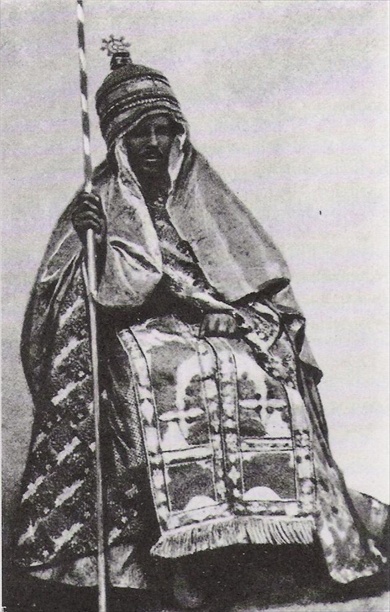 The majority of Tigrayans trace their origin to early Semitic-speaking peoples whose presence in the region dates back to at least 2000 BC, based on linguistic evidence (and known from the 9th century BC from inscriptions).
The majority of Tigrayans trace their origin to early Semitic-speaking peoples whose presence in the region dates back to at least 2000 BC, based on linguistic evidence (and known from the 9th century BC from inscriptions).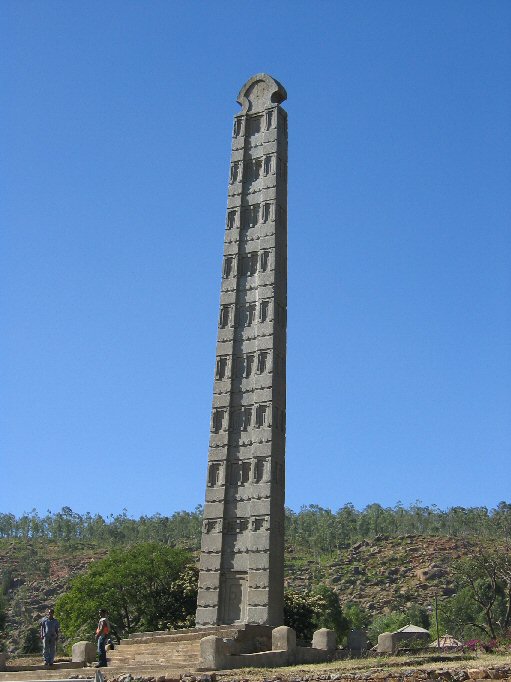
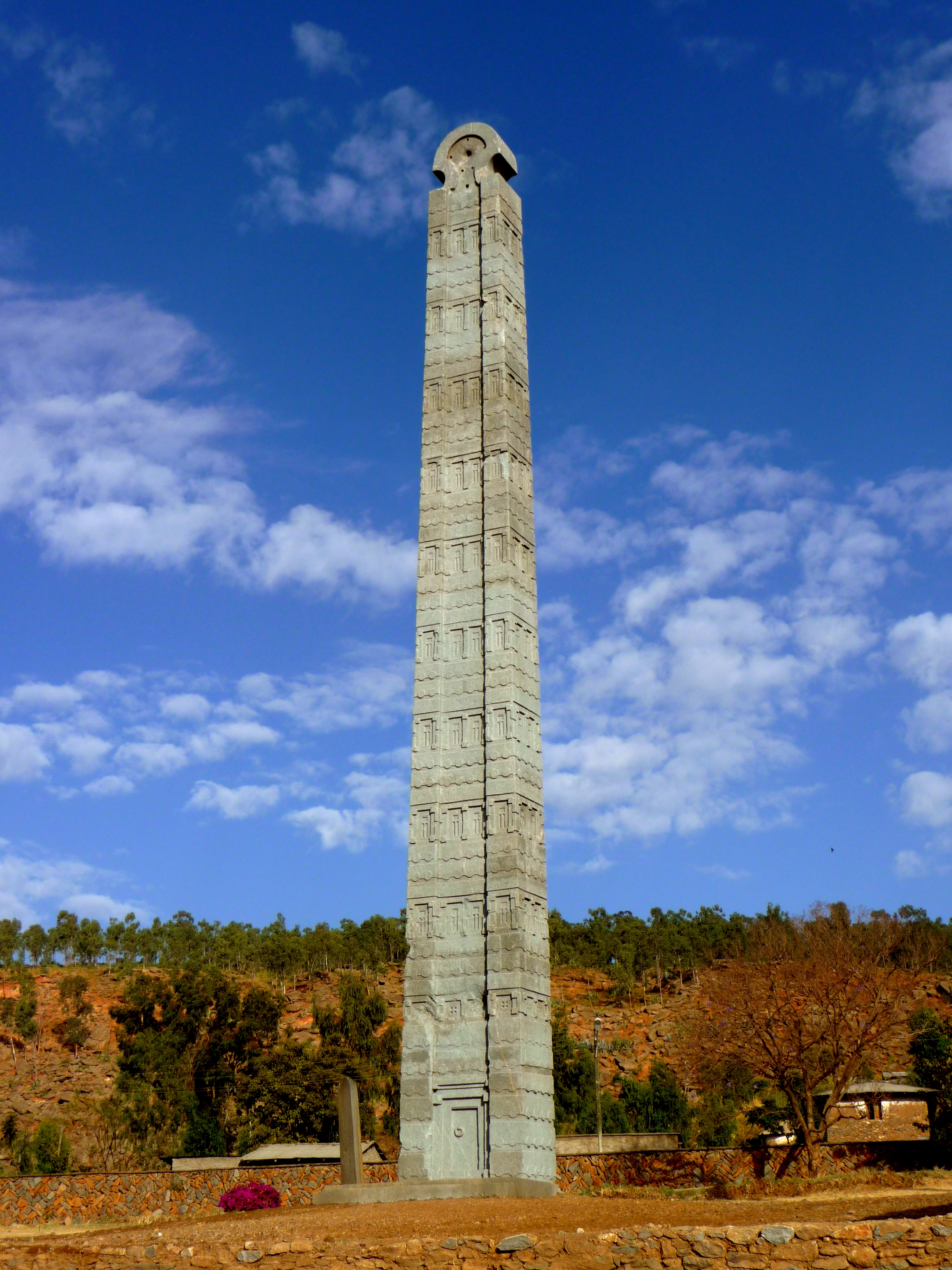 A variant of the term Tigray, first appears in a 10th-century gloss to
A variant of the term Tigray, first appears in a 10th-century gloss to
 Tigrayans constitute approximately 6.1% of the population of Ethiopia and are largely small holding farmers inhabiting small communal villages. The Tigrayans constitute the fourth largest ethnic group in the country after the Oromo, Amhara and Somali. They are mainly Christian and members of the Ethiopian Orthodox Tewahedo Church (approximately 96%), with a small minority of Muslims, Catholics and Protestants. The predominantly Tigrayan populated urban centers in Ethiopia are found within the Tigray Region in towns including
Tigrayans constitute approximately 6.1% of the population of Ethiopia and are largely small holding farmers inhabiting small communal villages. The Tigrayans constitute the fourth largest ethnic group in the country after the Oromo, Amhara and Somali. They are mainly Christian and members of the Ethiopian Orthodox Tewahedo Church (approximately 96%), with a small minority of Muslims, Catholics and Protestants. The predominantly Tigrayan populated urban centers in Ethiopia are found within the Tigray Region in towns including
 The daily life of Tigrayans are highly influenced by religion. Before the coming of Christianity, most Tigrayans followed a pagan religion with a number of deities, including the sun god Utu, and the moon god Almaqah. Some tribes however practiced Judaism. The most prominent polytheistic kingdoms was D’mt and early Kingdom of Aksum, Aksum.
The daily life of Tigrayans are highly influenced by religion. Before the coming of Christianity, most Tigrayans followed a pagan religion with a number of deities, including the sun god Utu, and the moon god Almaqah. Some tribes however practiced Judaism. The most prominent polytheistic kingdoms was D’mt and early Kingdom of Aksum, Aksum.
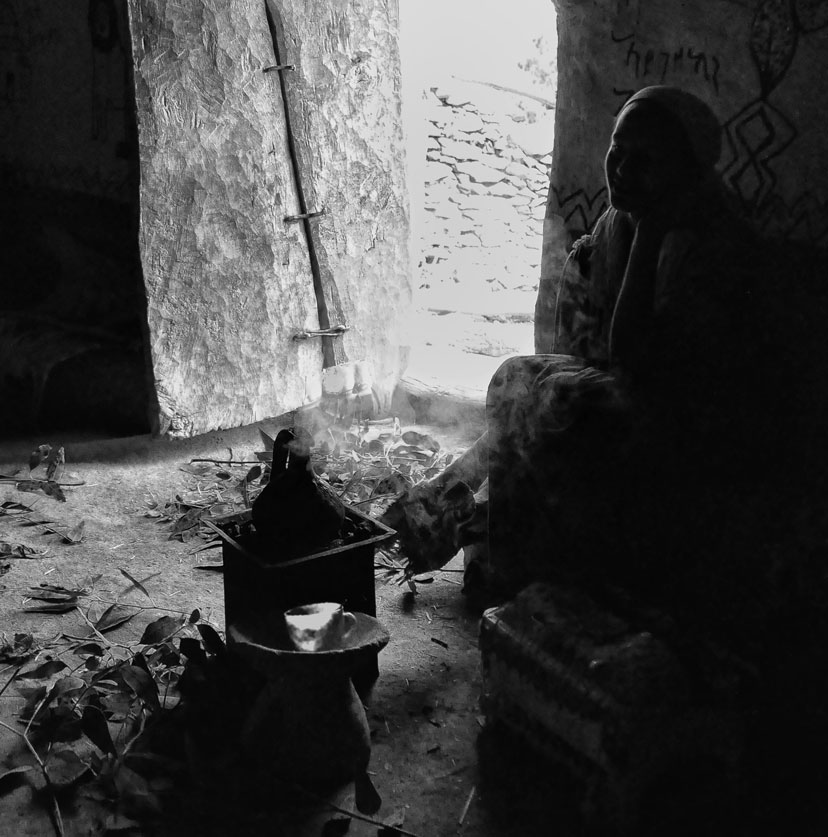 Tigrayans sometimes described as “individualistic”, due to elements of competition, jealousy and local conflicts. This, however, rather reflects a strong tendency to defend one's own community and local rights against—then widespread—interferences, be it from more powerful individuals or the state. Tigrayans communities are marked by numerous social institutions with a strong networking of character, where relations are based on mutual rights and bonds. Economic and other support is mediated by these institutions. In the urban context, the modern local government have taken over the functions of traditional associations. In most rural areas, however, traditional social organizations are fully in function. All members of such an extended family are linked by strong mutual obligations. Villages are usually perceived as genealogical communities, consisting of several lineages.
Tigrayans sometimes described as “individualistic”, due to elements of competition, jealousy and local conflicts. This, however, rather reflects a strong tendency to defend one's own community and local rights against—then widespread—interferences, be it from more powerful individuals or the state. Tigrayans communities are marked by numerous social institutions with a strong networking of character, where relations are based on mutual rights and bonds. Economic and other support is mediated by these institutions. In the urban context, the modern local government have taken over the functions of traditional associations. In most rural areas, however, traditional social organizations are fully in function. All members of such an extended family are linked by strong mutual obligations. Villages are usually perceived as genealogical communities, consisting of several lineages. A remarkable heritage of Tigrayans are their customary laws. In Tigray, customary law is also still partially practiced to some degree even in political self-organization and penal cases. It is also of great importance for conflict resolution.
A remarkable heritage of Tigrayans are their customary laws. In Tigray, customary law is also still partially practiced to some degree even in political self-organization and penal cases. It is also of great importance for conflict resolution.
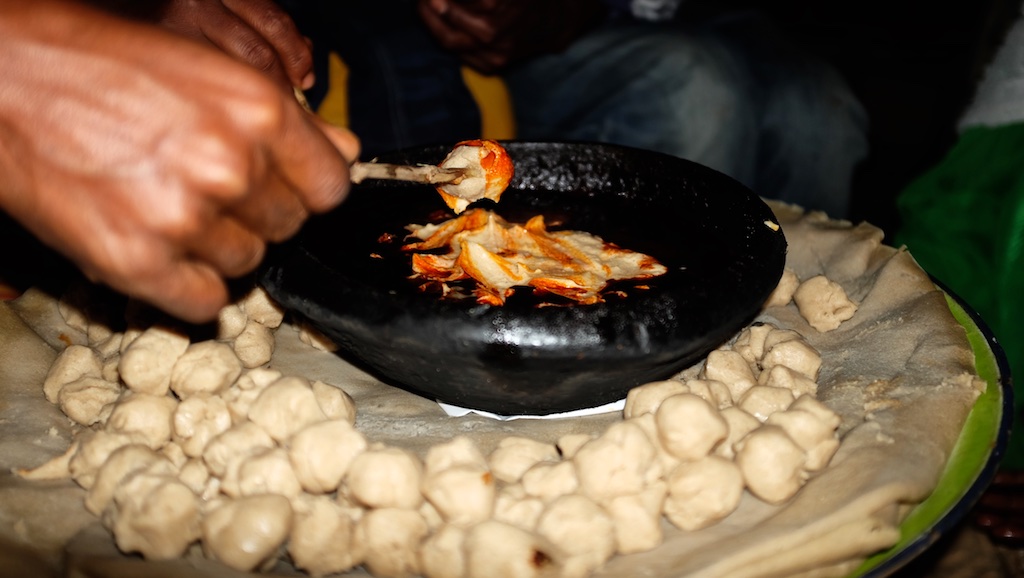 Tigrayans food characteristically consists of vegetable and often very spicy meat dishes, usually in the form of ''tsebhi'' ( ti, ፀብሒ), a thick stew, served atop ''injera'', a large sourdough flatbread. As the vast majority of Tigrayans belong to the Ethiopian Orthodox Church (and the minority Muslims), pork is not consumed because of religious beliefs. Meat and dairy products are not consumed on Wednesdays and Fridays, and also during the seven compulsory fasts. Because of this reason, many vegan meals are present. Eating around a shared food basket, ''mäsob'' ( ti, መሶብ) is a custom in the Tigray region and is usually done so with families and guests. The food is eaten using no cutlery, using only the fingers (''of the right hand'') and sourdough flatbread to grab the contents on the bread.
Tigrayans food characteristically consists of vegetable and often very spicy meat dishes, usually in the form of ''tsebhi'' ( ti, ፀብሒ), a thick stew, served atop ''injera'', a large sourdough flatbread. As the vast majority of Tigrayans belong to the Ethiopian Orthodox Church (and the minority Muslims), pork is not consumed because of religious beliefs. Meat and dairy products are not consumed on Wednesdays and Fridays, and also during the seven compulsory fasts. Because of this reason, many vegan meals are present. Eating around a shared food basket, ''mäsob'' ( ti, መሶብ) is a custom in the Tigray region and is usually done so with families and guests. The food is eaten using no cutlery, using only the fingers (''of the right hand'') and sourdough flatbread to grab the contents on the bread.
File:Alula Engida.jpg, Ras Alula, Ras Alula (Abba Nega) of Tigray region, Tigray, commander of the Battle of Dogali
File:Tedros Adhanom Ghebreyesus - AI for Good Global Summit 2018 (40316994230) (cropped).jpg, Tedros Adhanom, Tedros Adhanom Ghebreyesus, the first ever List of ethnic groups of Africa, African Director-General of the World Health Organization
File:Meles Zenawi - World Economic Forum on Africa 2012.jpg, Politician Meles Zenawi, the former Prime Minister of
*Meles Zenawi – Former Prime Minister of Ethiopia
*Rophnan – musician
*Abraham Belay - Ministry of Defense (Ethiopia), Minister of National Defense
*Yohannes IV - Emperor of Ethiopia born in Tembien, Ethiopian Empire
*Debretsion Gebremichael – Governor of Tigray Region, Tigray.
*Gebrehiwot Baykedagn – was an Ethiopian doctor, economist, and intellectual.
*Sebhat Gebre-Egziabher – Ethiopian writer
*Tewolde Berhan Gebre Egziabher – world-renowned environmental scientist
*Kinfe Abraham – Founder of Ethiopian Institute of Peace and former president of Horn of Africa Democracy and Development
*Gebregziabher Gebremariam – runner who won 5 times in the World Cross Country Championships
*Werknesh Kidane – runner who won a gold medal in the 2003 World Cross Country Championships
*Abeba Aregawi – runner and gold medalist of world, world indoor and European indoor
*Tsgabu Gebremaryam Grmay – road cyclist one time African time trial champion
*Siye Abraha – leading the UN Development Programme's security sector reform in Liberia
*Abune Mathias – "His Holiness Abune Mathias I, Sixth Patriarch and Catholicos of Ethiopia, Archbishop of Axum and Ichege of the See of Saint Taklehaimanot.
*Tedros Adhanom – The Director General of World Health Organization
*Arkebe Oqubay - is a senior Ethiopian politician, a Minister and Special Advisor to the former Prime Minister of Ethiopia, Hailemariam Desalegn.
*Gebrehiwot Baykedagn – was one of the pioneer Ethiopian doctor, economist, and intellectual.
*Fisseha Desta – Vice President of Ethiopia
*Atse Baeda Maryam – Atse a pretender, son of Mikael Sehul, Ras Mikael SehulHerbert Weld Blundell, ''The Royal chronicle of Abyssinia, 1769–1840'', (Cambridge: University Press, 1922), pp. 384–390
*Mikael Sehul – Ras (title), Ras of
Tigray Region
The Tigray Region, officially the Tigray National Regional State, is the northernmost regional state in Ethiopia. The Tigray Region is the homeland of the Tigrayan, Irob, and Kunama people. Its capital and largest city is Mekelle. Tigray ...
of northern Ethiopia
Ethiopia, , om, Itiyoophiyaa, so, Itoobiya, ti, ኢትዮጵያ, Ítiyop'iya, aa, Itiyoppiya officially the Federal Democratic Republic of Ethiopia, is a landlocked country in the Horn of Africa. It shares borders with Eritrea to the ...
. They speak the Tigrinya language
(; also spelled Tigrigna) is an Ethio-Semitic language commonly spoken Eritrea and in northern Ethiopia's Tigray Region by the Tigrinya and Tigrayan peoples. It is also spoken by the global diaspora of these regions.
History and literature ...
, an Afroasiatic language
The Afroasiatic languages (or Afro-Asiatic), also known as Hamito-Semitic, or Semito-Hamitic, and sometimes also as Afrasian, Erythraean or Lisramic, are a language family of about 300 languages that are spoken predominantly in the geographic su ...
belonging to the Ethiopian Semitic
Ethiopian Semitic (also Ethio-Semitic, Ethiosemitic, Ethiopic or Abyssinian) is a family of languages spoken in Ethiopia, Eritrea and Sudan. They form the western branch of the South Semitic languages, itself a sub-branch of Semitic, part of ...
branch.
The daily life of Tigrayans is highly influenced by religious concepts. For example, the Christian Orthodox fasting periods are strictly observed, especially in Tigray; but also traditional local beliefs such as in spirits, are widespread. In Tigray the language of the church remains exclusively Ge’ez. Tigrayan society is marked by a strong ideal of communitarianism and, especially in the rural sphere, by egalitarian principles. This does not exclude an important role of gerontocratic rules and in some regions such as the wider Adwa area, formerly the prevalence of feudal lords, who, however, still had to respect the local land rights.
History
 The majority of Tigrayans trace their origin to early Semitic-speaking peoples whose presence in the region dates back to at least 2000 BC, based on linguistic evidence (and known from the 9th century BC from inscriptions).
The majority of Tigrayans trace their origin to early Semitic-speaking peoples whose presence in the region dates back to at least 2000 BC, based on linguistic evidence (and known from the 9th century BC from inscriptions).
 A variant of the term Tigray, first appears in a 10th-century gloss to
A variant of the term Tigray, first appears in a 10th-century gloss to Cosmas Indicopleustes
Cosmas Indicopleustes ( grc-x-koine, Κοσμᾶς Ἰνδικοπλεύστης, lit=Cosmas who sailed to India; also known as Cosmas the Monk) was a Greek merchant and later hermit from Alexandria of Egypt. He was a 6th-century traveller who ma ...
''Indicopleustes'', i.e. after the Aksumite period; according to this source one of the groups of the region were the "Tigrētai" and the "Agazē" (i.e. the Agʿazi Agʿazi is the name of a region of the Aksumite Empire in what consists today of Eastern Tigray, Amhara and Southern Eritrea.
History
The earliest attestation of this name can be found in the determined ''nisba''-form yg'ḏyn in three pre-Aksu ...
) the latter being the Aksumites. The toponym Tigray is probably originally ethnic, the "Tigrētai" then meant "the tribes near Adulis". These are believed to be the ancient people from whom the present-day Tigray, the Eritrean tribes Tigre and Tigrinya
(; also spelled Tigrigna) is an Ethio-Semitic language commonly spoken Eritrea and in northern Ethiopia's Tigray Region by the Tigrinya and Tigrayan peoples. It is also spoken by the global diaspora of these regions.
History and literatur ...
are descended from. There is no indication that the term Tigray could be explained through Ge'ez gäzärä ("subdue"), with the meaning "the submitted" (in supposed contrast to the "free" Agaziyan linked with the rulers of Aksum).
A Portuguese map from the 1660 shows Medri Bahri
Medri Bahri ( ti, ምድሪ ባሕሪ, English: Land of the Sea Kingdom), also known as Mereb Melash, was an Eritrean kingdom emerged in 1137 until conquest by the Ethiopian Empire in 1879. It was situated in modern-day Eritrea, and was ruled by ...
consisting of the three highland provinces of Eritrea and distinct from Ethiopia. That 16th century also marked the arrival of the Ottomans, who began making inroads in the Red Sea area. Bruce noted "They next passed the Mareb, which is the boundary between Tigre and the Baharnagash".
By the beginning of the 19th century Henry Salt (Egyptologist)
Henry Salt (14 June 178030 October 1827) was an English artist, traveller, collector of antiquities, diplomat, and Egyptologist.
Biography Early life
Salt, the son of Thomas Salt who was a physician and Alice ''née'' Butt, was born in Lichfi ...
, who travelled in the interior of Ethiopia, divided the Ethiopian region, like James Bruce into three distinct and independent states. These three great divisions (based arbitrarily on Language) are Tigre, Amhara, and the province of Shoa. Henry considered Tigre as the more powerful state of the three; a circumstance arising from the natural strength of the country, the warlike disposition of its inhabitants, and its vicinity to the sea coast; an advantage that allowed it to secure a monopoly on all the muskets imported into the country. He divided the Tigre kingdom into several provinces as the centre where it was considered the seat of the state being referred as Tigre proper a region around Adwa. The other Provinces of this kingdom includes Enderta, Agame
Agame () was a former province in northern Ethiopia. It includes the northeastern corner of the Ethiopian Empire, borders Akele Guzai in Eritrea, Tembien, Kalatta Awlalo and Enderta in the south, and both the Eritrean and Ethiopian Afar lowlan ...
, Wojjerat, Tembien, and Shire.
Demographics
Mekelle
Mekelle ( ti, መቐለ, am, መቀሌ, mäqälle, mek’elē) or Mekele is a special zone and capital of the Tigray Region of Ethiopia. Mekelle was formerly the capital of Enderta awraja in Tigray. It is located around north of the Ethiopi ...
, Adwa, Axum, Adigrat
Adigrat (, ''ʿaddigrat'', also called ʿAddi Grat) is a city and separate woreda in Tigray Region of Ethiopia. It is located in the Misraqawi Zone at longitude and latitude , with an elevation of above sea level and below a high ridge to the we ...
, and Shire. Huge populations of Tigrayans are also found in other large Ethiopian cities such as the capital Addis Ababa
Addis Ababa (; am, አዲስ አበባ, , new flower ; also known as , lit. "natural spring" in Oromo), is the capital and largest city of Ethiopia. It is also served as major administrative center of the Oromia Region. In the 2007 census, t ...
and Gondar.
The Tigrayans are, despite a general impression of homogeneity, composed of numerous subgroups with their own socio-cultural traditions. Among these there are the Agame
Agame () was a former province in northern Ethiopia. It includes the northeastern corner of the Ethiopian Empire, borders Akele Guzai in Eritrea, Tembien, Kalatta Awlalo and Enderta in the south, and both the Eritrean and Ethiopian Afar lowlan ...
of eastern Tigray, mentioned in the Monumentum Adulitanum in the 3rd century; the cattle herders in Humera; the egalitarian Wajjarat of south-eastern Tigray. There are also some immigrant Tigrayans in the neighbouring country of Eritrea as well as abroad in the United States, Canada, Australia, and Europe.
The decline of the Tigrayan population in Ethiopia was caused by the 1958 famine in Tigray, when over 100,000 people died. Later on, the Mengistu Haile Mariam-led brutal military dictatorship (Derg) used the 1983–1985 famine in Ethiopia as government policy (by restricting food supplies) for counter-insurgency strategy (against Tigray People's Liberation Front guerrilla-soldiers), and for "social transformation" in non-insurgent areas (against people of Tigray province, Welo province and such). Due to organized government policies that deliberately multiplied the effects of the famine, around 1.2 million people died in Ethiopia from this famine. The majority were from Tigray province and other parts of northern Ethiopia
Ethiopia, , om, Itiyoophiyaa, so, Itoobiya, ti, ኢትዮጵያ, Ítiyop'iya, aa, Itiyoppiya officially the Federal Democratic Republic of Ethiopia, is a landlocked country in the Horn of Africa. It shares borders with Eritrea to the ...
.Language
Tigrayans speak Tigrinya language, Tigrinya as a mother tongue. It belongs to theEthiopian Semitic
Ethiopian Semitic (also Ethio-Semitic, Ethiosemitic, Ethiopic or Abyssinian) is a family of languages spoken in Ethiopia, Eritrea and Sudan. They form the western branch of the South Semitic languages, itself a sub-branch of Semitic, part of ...
subgroup of the Afroasiatic languages, Afroasiatic family. In Ethiopia, Tigrinya is the third most spoken language. Several Tigrinya dialects, which differ phonetically, lexically, and grammatically from place to place, are more broadly classified as Hamasien (Eritrean) or Tigray (Ethiopian) dialects.Leslau, Wolf (1941) ''Documents Tigrigna (Éthiopien Septentrional): Grammaire et Textes''. Paris: Librairie C. Klincksieck. No dialect appears to be accepted as a standard.
Tigrinya is closely related to Amharic and Tigre language, Tigre (in Eritrea commonly called Tigrayit), another East African Semitic language spoken by the Tigre as well as many Beja people, Beja of Eritrea and Sudan. Tigrinya and Tigre, though more closely related to each other linguistically than either is to Amharic, are however not mutually intelligible. Tigrinya has traditionally been written using the same Ge'ez alphabet (''fidel'') as Amharic and Tigre language, Tigre. It has also met with the linguistic difficulty of the Ge'ez script being a syllabic system which does not distinguish long vowels from short ones. While this works well for writing Tigrinya or Amharic, which do not rely on vowel length in words, it does complicate writing Tigre, where vowel length sometimes distinguishes one word and its meaning from another. The Ge'ez script evolved from the Ancient South Arabian script, Epigraphic South Arabian script, whose first inscriptions are from the 8th century BC in Eritrea, Ethiopia and Yemen.
Religion
 The daily life of Tigrayans are highly influenced by religion. Before the coming of Christianity, most Tigrayans followed a pagan religion with a number of deities, including the sun god Utu, and the moon god Almaqah. Some tribes however practiced Judaism. The most prominent polytheistic kingdoms was D’mt and early Kingdom of Aksum, Aksum.
The daily life of Tigrayans are highly influenced by religion. Before the coming of Christianity, most Tigrayans followed a pagan religion with a number of deities, including the sun god Utu, and the moon god Almaqah. Some tribes however practiced Judaism. The most prominent polytheistic kingdoms was D’mt and early Kingdom of Aksum, Aksum.
Christianity
Christianity has been the predominant religion of Tigrayans since Classical antiquity, antiquity. Tigrayan Christians are mostly Oriental Orthodox Churches, Oriental Orthodox with a Catholic Church, Catholic and Pentay minority.Islam
Tigrayan Muslims are virtually all Sunni Islam, Sunni, though a minority of Al-Ahbash, Ahbash followers also exists. Today, the Muslim community is concentrated mainly in urban areas. Many Jeberti people, Jeberti in Eritrea claim that they are a separate ethnic group from the Tigrinya people in the area and consider their native languages to be both Arabic and Tigrinya, and are thus treated as a separate ethno-religious community.Culture
 Tigrayans sometimes described as “individualistic”, due to elements of competition, jealousy and local conflicts. This, however, rather reflects a strong tendency to defend one's own community and local rights against—then widespread—interferences, be it from more powerful individuals or the state. Tigrayans communities are marked by numerous social institutions with a strong networking of character, where relations are based on mutual rights and bonds. Economic and other support is mediated by these institutions. In the urban context, the modern local government have taken over the functions of traditional associations. In most rural areas, however, traditional social organizations are fully in function. All members of such an extended family are linked by strong mutual obligations. Villages are usually perceived as genealogical communities, consisting of several lineages.
Tigrayans sometimes described as “individualistic”, due to elements of competition, jealousy and local conflicts. This, however, rather reflects a strong tendency to defend one's own community and local rights against—then widespread—interferences, be it from more powerful individuals or the state. Tigrayans communities are marked by numerous social institutions with a strong networking of character, where relations are based on mutual rights and bonds. Economic and other support is mediated by these institutions. In the urban context, the modern local government have taken over the functions of traditional associations. In most rural areas, however, traditional social organizations are fully in function. All members of such an extended family are linked by strong mutual obligations. Villages are usually perceived as genealogical communities, consisting of several lineages. A remarkable heritage of Tigrayans are their customary laws. In Tigray, customary law is also still partially practiced to some degree even in political self-organization and penal cases. It is also of great importance for conflict resolution.
A remarkable heritage of Tigrayans are their customary laws. In Tigray, customary law is also still partially practiced to some degree even in political self-organization and penal cases. It is also of great importance for conflict resolution.
Cuisine
 Tigrayans food characteristically consists of vegetable and often very spicy meat dishes, usually in the form of ''tsebhi'' ( ti, ፀብሒ), a thick stew, served atop ''injera'', a large sourdough flatbread. As the vast majority of Tigrayans belong to the Ethiopian Orthodox Church (and the minority Muslims), pork is not consumed because of religious beliefs. Meat and dairy products are not consumed on Wednesdays and Fridays, and also during the seven compulsory fasts. Because of this reason, many vegan meals are present. Eating around a shared food basket, ''mäsob'' ( ti, መሶብ) is a custom in the Tigray region and is usually done so with families and guests. The food is eaten using no cutlery, using only the fingers (''of the right hand'') and sourdough flatbread to grab the contents on the bread.
Tigrayans food characteristically consists of vegetable and often very spicy meat dishes, usually in the form of ''tsebhi'' ( ti, ፀብሒ), a thick stew, served atop ''injera'', a large sourdough flatbread. As the vast majority of Tigrayans belong to the Ethiopian Orthodox Church (and the minority Muslims), pork is not consumed because of religious beliefs. Meat and dairy products are not consumed on Wednesdays and Fridays, and also during the seven compulsory fasts. Because of this reason, many vegan meals are present. Eating around a shared food basket, ''mäsob'' ( ti, መሶብ) is a custom in the Tigray region and is usually done so with families and guests. The food is eaten using no cutlery, using only the fingers (''of the right hand'') and sourdough flatbread to grab the contents on the bread.
Regional dishes
Tihlo, T'ihlo ( ti, ጥሕሎ, ''ṭïḥlo'') is a dish originating from the historicalAgame
Agame () was a former province in northern Ethiopia. It includes the northeastern corner of the Ethiopian Empire, borders Akele Guzai in Eritrea, Tembien, Kalatta Awlalo and Enderta in the south, and both the Eritrean and Ethiopian Afar lowlan ...
and Akele Guzai, Akkele Guzai provinces. The dish is unique to these parts of both countries, but is now slowly spreading throughout the entire region. T'ihlo is made using moistened roasted barley flour that is kneaded to a certain consistency. The dough is then broken into small ball shapes and is laid out around a bowl of spicy meat stew. A two-pronged wooden fork is used to spear the ball and dip it into the stew. The dish is usually served with ''Tej, mes,'' a type of honey wine.
Genetics
Kumar, H R S et al. (2020), showed that Tigray samples from Northern Ethiopia had (~50%) of a genetic component shared with Europeans and Middle Eastern Populations.Notable people
Ethiopia
Ethiopia, , om, Itiyoophiyaa, so, Itoobiya, ti, ኢትዮጵያ, Ítiyop'iya, aa, Itiyoppiya officially the Federal Democratic Republic of Ethiopia, is a landlocked country in the Horn of Africa. It shares borders with Eritrea to the ...
.
File:Debretsion Gebremichael crop.jpg, Debretsion Gebremichael, governor of Tigray Region, Tigray.
Ethiopia
Ethiopia, , om, Itiyoophiyaa, so, Itoobiya, ti, ኢትዮጵያ, Ítiyop'iya, aa, Itiyoppiya officially the Federal Democratic Republic of Ethiopia, is a landlocked country in the Horn of Africa. It shares borders with Eritrea to the ...
*Haile Selassie Gugsa – Dejazmatch from Ethiopia
Ethiopia, , om, Itiyoophiyaa, so, Itoobiya, ti, ኢትዮጵያ, Ítiyop'iya, aa, Itiyoppiya officially the Federal Democratic Republic of Ethiopia, is a landlocked country in the Horn of Africa. It shares borders with Eritrea to the ...
*Wolde Selassie- Ras (title), Ras of Ethiopia
Ethiopia, , om, Itiyoophiyaa, so, Itoobiya, ti, ኢትዮጵያ, Ítiyop'iya, aa, Itiyoppiya officially the Federal Democratic Republic of Ethiopia, is a landlocked country in the Horn of Africa. It shares borders with Eritrea to the ...
*Ras Alula, Ras Alula (Abba Nega) – 19th Century Ras of Ethiopia
Ethiopia, , om, Itiyoophiyaa, so, Itoobiya, ti, ኢትዮጵያ, Ítiyop'iya, aa, Itiyoppiya officially the Federal Democratic Republic of Ethiopia, is a landlocked country in the Horn of Africa. It shares borders with Eritrea to the ...
*Ras Mengesha Yohannes – Ethiopian aristocratic and court titles#Men.27s honorifics, Ras of Tigray Province, Tigray.
*Hayelom Araya – Ethiopian General of the armyGebru Tareke, ''The Ethiopian Revolution: War in the Horn of Africa'' (New Haven: Yale University, 2009), p. 105
*Miruts Yifter – athlete who won two gold medals in the 1980 Moscow Olympics
*Abune Paulos – Former Patriarch of the Ethiopian Orthodox Tewahedo Church.
*Kiros Alemayehu - Kiros was a prolific songwriter and singer. He popularized Tigrigna songs through his albums to the non-Tigrinya speaking Ethiopians.
*Eyasu Berhe - was an Ethiopian singer, writer, producer and poet, as well as a member of the Tigray People's Liberation Front (TPLF).
*Dawit Kebede -winner of the 2010 CPJ International Press Freedom Award.
*Freweini Mebrahtu -2019 CNN Hero of the Year
*Ilfenesh Hadera -is an American actress,her father is from Tigray
*Zeresenay Alemseged -is Tigrayan paleoanthropologist who was the Chair of the Anthropology Department at the California Academy of Sciences in San Francisco, United States.
* Abebe Fekadu- Tigrayan Australian powerlifter.
Notes
References
Bibliography
* * {{authority control Tigray Region Ethnic groups in Ethiopia